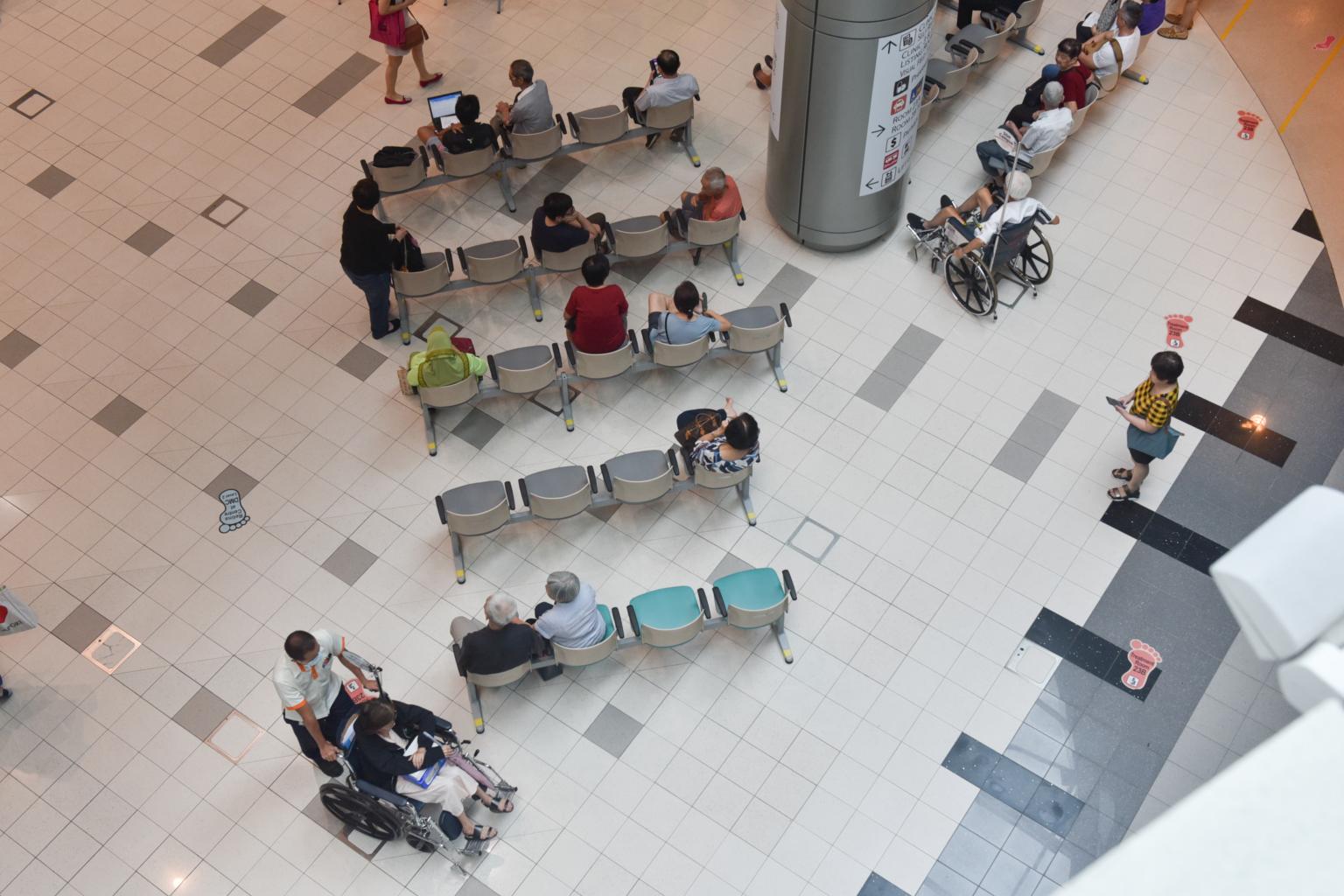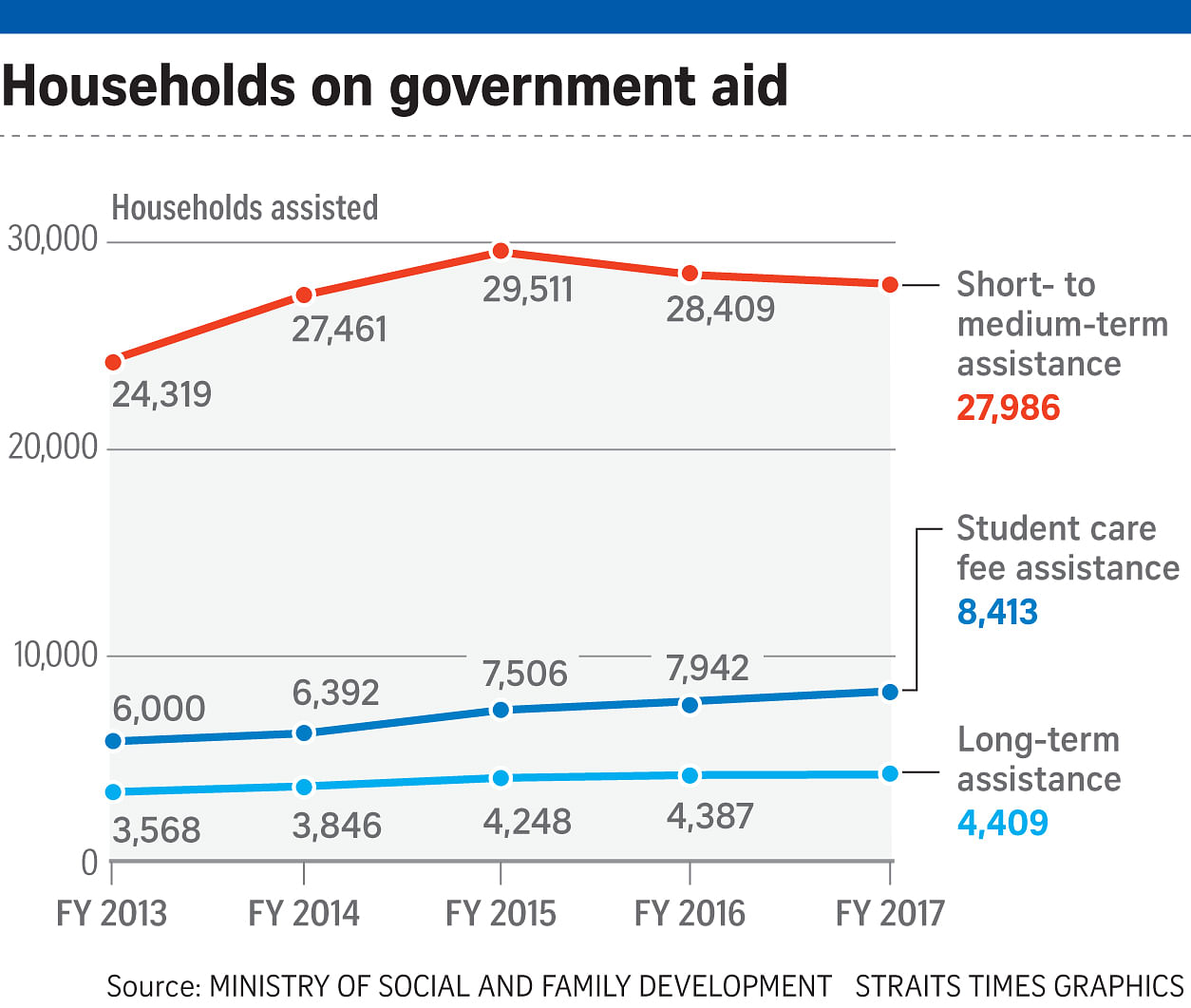More households receiving long-term financial assistance
Number on govt scheme last year up 24% from 2013, with more seniors unable to work and lacking family support
Sign up now: Get ST's newsletters delivered to your inbox

There were 4,409 households on the Government scheme run by the Ministry of Social and Family Development in the 2017 financial year, up from 4,387 families in the preceding 12 months.
ST PHOTO: JASMINE CHOONG
Cara Wong, Theresa Tan
Follow topic:
Increasing numbers of seniors who cannot work due to old age or illness and who lack family support are behind the steady rise in the number of families receiving long-term financial aid.
There were 4,409 households on the government scheme run by the Ministry of Social and Family Development (MSF) in the 2017 financial year, up from 4,387 families in the preceding 12 months.
The 2017 figure was 24 per cent more than the 3,568 families on the Long-Term Assistance scheme in 2013.
Social workers and sociologists told The Straits Times that the increase in those needing long-term support was due to a range of factors, from Singapore's ageing society to more people remaining single to shrinking family sizes.
Elderly folk on the scheme used to hold low-paying jobs and may now be in dire straits as they fall ill or cannot work due to old age.
Their children themselves could also be struggling to cope financially, and it is harder for these elderly people to get much support, said Mrs Tan-Wu Meiling, executive director of Shine Children and Youth Services.
Besides, the elderly tend to have fewer children to depend on as well. That forces many of these seniors to turn to the Government for aid.
The latest data was contained in the Community Care Endowment Fund (ComCare Fund) annual report for the 2017 financial year, released yesterday by MSF.

The ComCare Fund gave out $131 million to 79,470 individuals in the 12 months to March 31 this year, a slight increase over the $130 million disbursed to 83,353 beneficiaries in 2016.
ComCare is a key social safety net. Its assistance programmes provide a financial lifeline to struggling Singaporeans.
The Long-Term Assistance scheme, also known as public assistance, is meant for destitute individuals who permanently cannot work due to old age or illness, and who have little or no family support.
A person on the scheme gets a monthly sum of $500, while two-person households get $870. They also enjoy other aid such as free medical treatment at polyclinics.
Most people on this scheme are poorly educated, elderly singles who live alone.
Social workers and sociologists had mixed views on whether the numbers on the scheme will rise.
While some told The Straits Times that more seniors will need long-term help as the population continues to age, others said the future generation of elderly folk is more likely to stay healthy and employed, given the Government's push to get people to mind their health and remain employable, among other factors.
Sociologist Tan Ern Ser said: "All things being equal, future seniors are likely to be better educated, more employable and employed. They perhaps have a longer healthy life expectancy."
Meanwhile, the number of households on the ComCare student care fee assistance scheme has also risen. The scheme helps low-income families meet the cost of student care centre fees for children aged between seven and 14. Families get subsidies of up to 98 per cent of fees.
There were 8,413 families on this scheme in the 2017 financial year, up from 7,942 in 2016 and 6,000 in 2013.
The rise is due to the growing number of places in school-based student care centres. The income criterion was also revised so that more families can qualify.
Minister for Social and Family Development Desmond Lee said in a statement yesterday that ComCare continues to be a key social safety net, with ComCare assistance increasing over the years.

